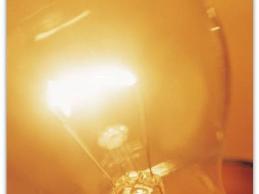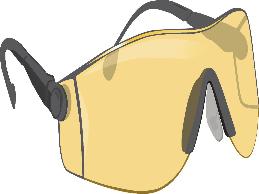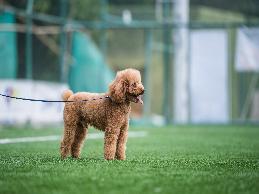On This Page
About Low Vision
Vision impairments result from conditions that range from the presence of some usable vision, low vision, to the absence of any vision, total blindness. Low vision is a term that describes a person with a vision impairment that cannot be improved by correction but has some usable vision remaining. Legal blindness is defined as 20/200 or less in the better eye with the best possible correction. Errors of refraction, diseases of the eye, and other vision-related conditions are usually the cause of vision loss. Each of these categories includes more specific disorders, which are described below.
• Common Errors of Refraction
o Myopia (Nearsightedness): Close objects look clear while distant objects appear blurred.
o Hyperopia (Farsightedness): The ability to see objects clearly at a distance while close objects appear blurry.
o Astigmatism: Due to the irregular curvature of the cornea, vision is blurry for both near and far objects.
o Presbyopia: The eye lens becomes less elastic (associated with aging) and produces blurred vision when focusing on near objects.
• Common Diseases of the Eye
o Cataracts: Clouding of the eye’s lens that causes loss of vision.
o Glaucoma: Pressure inside the eye is elevated and can cause damage to the optic nerve, which results in damage to peripheral vision.
o Macular Degeneration: There is a disturbance of blood vessels in the eye resulting in progressive loss of central vision.
o Retinitis Pigmentosa: There is a degeneration of pigment in the eye that is needed to absorb light and create visual images, leading to “tunnel vision” and night blindness.
o Retinopathy (due to Diabetes): Retinopathy typically affects the blood circulation of the retina, which causes blotchy vision.
• Other Vision Related Conditions
o Night Blindness: Night blindness results from pigmentary degeneration of the retina, which leads to difficulty seeing in low light.
o Color Vision Deficiency: A color vision deficiency occurs when cone cells of the retina, which provide daylight and color vision, are affected and there is difficulty distinguishing among colors. Typically this only involves certain hues, for example a red–green deficiency; total color blindness (achromatic vision) is rare.
o Lack of Depth Perception: A lack of depth perception is often caused by the loss of sight in one eye, resulting in difficulty with foreground/background discrimination.
o Floaters: Floaters are small specks or clouds moving in the field of vision.
Low Vision and the Americans with Disabilities Act
The ADA does not contain a definitive list of medical conditions that constitute disabilities. Instead, the ADA defines a person with a disability as someone who (1) has a physical or mental impairment that substantially limits one or more "major life activities," (2) has a record of such an impairment, or (3) is regarded as having such an impairment. For more information about how to determine whether a person has a disability under the ADA, see How to Determine Whether a Person Has a Disability under the Americans with Disabilities Act Amendments Act (ADAAA).
Accommodating Employees with Low Vision
People with low vision may develop some of the limitations discussed below, but seldom develop all of them. Also, the degree of limitation will vary among individuals. Be aware that not all people will need accommodations to perform their jobs and many others may only need a few accommodations. The following is only a sample of the possibilities available. Numerous other accommodation solutions may exist.
Questions to Consider:
- What limitations is the employee experiencing?
- How do these limitations affect the employee and the employee’s job performance?
- What specific job tasks are problematic as a result of these limitations?
- What accommodations are available to reduce or eliminate these problems? Are all possible resources being used to determine possible accommodations?
- Once accommodations are in place, would it be useful to meet with the employee to evaluate the effectiveness of the accommodations and to determine whether additional accommodations are needed?
- Do supervisory personnel and employees need training?
Key Accommodations:
Reading Printed Materials: Individuals with vision impairment may have difficulty accessing printed text. Factors that may influence the readability of printed text include font size, style, color, contrast, and overall text legibility.
- Closed circuit television (CCTV) system, which is sometimes referred to as an electronic or video magnifier
- Hand, stand, or portable magnifier
- Information in large print
- Note: The American Foundation for the Blind (2008c) recommends that the font size be at least 16 point but preferably 18 point.
- Photo copier enlarged paper material
- Color paper, acetate sheet, or overlay to increase color contrast between printed text and document background
- Optical devices such as monoculars or binocular systems, loupes, or prism spectacles
- Smart glasses
- Frequent breaks to rest eyes when fatigue is a factor
Accessing Computer Information: Computer access may be challenging for individuals who have low vision. Photosensitivity may also pose difficulty for when accessing computer information.
- Increased operating system font size with large-size computer monitors
- Note: Computer users can modify their computer display so that text is shown in large print
- Screen magnification software
- Locator dots and/or large print keyboard labels for keyboard navigation
- External computer screen magnifier
- Flicker-free monitor
- Anti-glare guard and computer glasses to reduce glare
- Frequent breaks to rest eyes when fatigue is a factor
Writing Notes and Completing Forms: Individuals with vision impairments may struggle to take written notes or complete forms. When feasible, modifying the way notes are taken or providing a product or service may be helpful.
- Closed circuit television (CCTV) system, which is sometimes referred to as an electronic or video magnifier
- Pens that include a bold felt tip or lighted pen
- Paper with tactile lines, bold print, or low glare
- Form/line guide
- Smart glasses
- Speech dictation software
Accessing a Telephone: Challenges that may arise for individuals with low vision when using a telephone include difficulty seeing displays or buttons, as well as knowing whether a line is active. Smartphones that primarily operate via touchscreen may also pose difficulty.
- Large print/color labels or tactile markings on telephone to identify keys and lines
- Hand/stand magnifier or optical magnifier
Working with Money: Accommodation may be needed to assist employees in identifying bills and coins when working with money.
- Hand/stand magnifier or optical magnifier
- Task lighting or headlamp
- Smart glasses
Reading from Instrument or Control Board: Individuals may need to access a variety of equipment in the workplace. Following instructions or prompts that are displayed visually may require accommodation.
- Hand/stand magnifier or optical magnifier
- Large print/color labels or tactile markings on telephone to identify keys and lines
- Task lighting
- Smart glasses
- Glare reduction
Repairing, Constructing, Assembling Pieces/Parts: Identifying and differentiating pieces or parts, as well as assembling or repairing appropriately, can pose unique challenges. Individuals with color vision deficiency may also struggle to work with color-coded assembly materials.
- Hand/stand magnifier or optical magnifier
- Task lighting
- Smart glasses
- CCTV
- Color identifying apps or devices
- Color vision correcting lenses
Mobility: Accommodations for workplace navigation, as well as necessary work travel, should be considered for individuals with low vision. Limitations may include difficulty reading signage or noticing obstacles that may be in one’s path.
- Service animal and/or mobility aid (e.g., cane, electronic aid)
- Mobility and orientation training
- Detectable warning surfaces
- Colored and/or textured edges on stairs
- Improved area lighting
- Traveling/evacuation partner
- Tactile map of evacuation and common routes
- Talking landmark or global positioning system
Driving: Commuting to and from work, as well as work-related travel, may require accommodation for employees who have driving limitations due to vision impairment. Note that while employers are not obligated to provide transportation to and from work unless they do so for other employees as a benefit of employment, they must consider other accommodations related to the commute if needed due to a disability.
- Shift change to daylight hours
- Driver (e.g., hired driver, volunteer, coworker)
- Public transportation or carpool
- Modified or flexible work schedule to meet public transportation needs
- Reassignment
- Telework
Other Accommodation Considerations:
- Training materials or company correspondence in alternate format (e.g., large print, Braille, CD-ROM, audiotape)
- Time off for training on adaptive technology, mobility training, and/or service animal training
- Additional training beyond what is typically given to others
- Accessible versions of employee related Web sites or Intranet material
- Note: See JAN's Tips for Designing Accessible Web Pages
Accommodation Ideas:
Situations and Solutions:
The following situations and solutions are real-life examples of accommodations that were made by JAN customers. Because accommodations are made on a case-by-case basis, these examples may not be effective for every workplace but give you an idea about the types of accommodations that are possible.






















